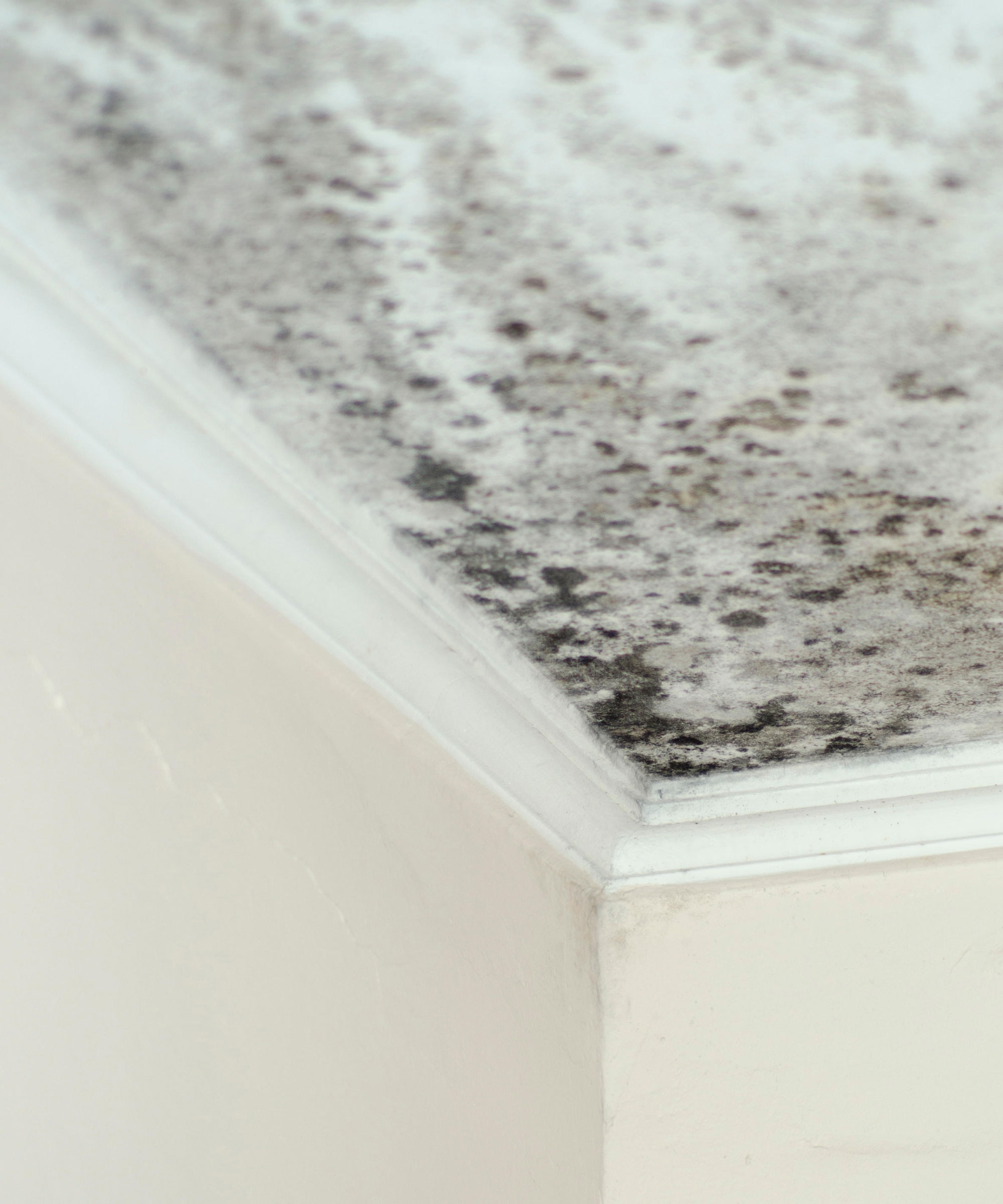
Mold is a threat to any home. It can ruin furnishings and damage interiors, and it can cause health problems, so it’s essential to know how to prevent mold after a flood when the conditions allow it to thrive.
Damage is multiplied the longer mold grows, so it’s essential to know about cleaning off surfaces effectively either yourself or – in some cases – by calling in the professionals to deal with it.
These are the ways to stop mold if heavy rainfall or an incident has caused flooding in your home along with what you need to know about the health issues it can cause.
Prevent mold after a flood – essential actions
It’s important to know how to get rid of black mold in your home. Mold spores are in the air naturally, and in the right conditions mold will thrive in your home: for example, bathroom ceiling mold removal can become necessary due to the damp conditions in the room which mean mold can proliferate.
A flood in your home, whether caused by the weather, another external issue, or faulty plumbing indoors, brings the threat of a mold outbreak and speedy action is vital. These are the steps to take in the wake of a flood and what you must know about preventing mold, according to the experts.

What to do first after a flood to prevent mold
After flooding, it’s vital to act swiftly to prevent mold. ‘A flooding event of any kind creates perfect conditions for growth thanks to the moisture involved, which is why drying out the space should be at the top of your priority list,’ explains Michael Rubino, a mold and air quality expert and founder of HomeCleanse. ‘The longer that moisture remains in the home, the greater the chance for indoor contamination to develop.’
These are the steps he recommends:
- Make sure all of the electricity is off before entering any standing water. Also, put on safety gear before entering the space.
- Use a submersible pump to pump out as much water as possible. The exit point for the water should be pointed away from the house, either toward the curb or downhill away from the house.
- Use a shop vacuum to remove the remainder of the water. Read the directions before operating to make sure the machine is ready to intake all of the water. Also, keep an eye on the tank so that it doesn’t get too full, causing the machine to malfunction.
- Remove everything possible from the flooded area and begin mopping and wiping the floors, walls, and any other surface with a botanical cleaning product. Use microfiber towels to pat dry every available surface (they’re 100 times better at removing small particles). Wash these towels in an EPA-approved cleaning product immediately after use, or throw them away just to be safe. Bacteria may be present depending on the source of the water, so thoroughness is absolutely key to this process.
- Install a dehumidifier to complete the drying process. The ideal humidity range should be between 35 and 50 percent. If it’s less than 24 hours after the event, you can use fans to help remove water from certain areas. If it’s past 24 hours, steer clear of fans as they can circulate microscopic contaminants throughout the indoor space.
- Contact a mold inspector 72 to 96 hours after the space has dried to make sure there aren’t any hidden issues.
- Continue to clean and further decontaminate the space. Harmful particles like bacteria and mold spores are microscopic, so while you may not see them, they can still be present.
- Get in touch with your insurance company and start filing your claim.
‘Throughout each step of the process, take the time to document everything,’ he advises. ‘This will help tremendously with insurance companies.’
When do you need a pro?
There are occasions when you should call in a professional to prevent mold. ‘If any contamination is found in the home during the mold inspection, the best option is to call in a qualified remediation company to come in and decontaminate the space as soon as possible,’ says Michael Rubino. ‘The longer the mold is present in the building, the more particles it will release into the air, lowering the indoor air quality and increasing exposure. Deep cleaning to remove contamination should also be performed on all belongings in the building.’
Note, too, that some circumstances demand pro help. ‘Depending on the type of event, it has the ability to bring in a host of bacteria, molds, and toxins that can all cause serious illnesses,’ explains Michael. ‘Flooding from a hurricane, for example, can introduce hazardous wastewater from outside into a home. In this instance, always opt for safety and either have a professional deal with the event or wear complete protective gear. Just remember that the moisture needs to be dealt with within 24 hours if possible.
‘If someone has underlying health issues, err on the side of caution and hire professional cleaners. You never know what could exist in that indoor environment and potentially trigger adverse health reactions.
‘Finally, if the entire home floods, it can be difficult to deal with all of the moisture present quickly. In this instance, it may be better to contact professionals for help who can quickly and efficiently begin tackling the entire property.’
Get savvy about materials and mold
Some of the items in a home are difficult to prevent mold growth on. ‘Materials or items that are porous such as cushions, throw pillows, books, etc, should be cleaned and dried as quickly as possible, as they will hold moisture, which is an ingredient necessary for microbial growth to occur,’ explains Bud Summers, executive vice president of operations & training at PuroClean.
‘You will also need to search for hidden sources of moisture which can be absorbed by sheetrock (drywall), carpet and/or pad, and even underneath furniture. Ensuring a building is dried properly is removing water from carpet and pad and structural materials and contents as quickly as possible to help limit microbial growth.’
DIY clean with care
Be cautious about what you use for cleaning. ‘Avoid some of the stereotypical solutions of using harsh chemicals like chlorine bleach,’ advises Bud Summers. ‘Always remember to follow instructions on the labels of cleaning products and biocides used for cleaning and mold remediation. Never mix chemicals, as they can cause a reaction that can lead to serious health and safety issues.’
Wear protective equipment
When you’re preventing mold after a flood, it’s essential to use personal protective equipment (PPE).
‘To protect against inhalation, ingestion, or dermal contact, professional restorers use Tyvek suits, full-face respirators with a P100 filtration cartridge, and proper gloves to limit any exposure during the mold remediation process,’ explains Bud Summers. ‘There are also industry standards they will follow for proper mold remediation based on IICRC (Institute of Inspection, Cleaning and Restoration Certification) requirements.
‘If you notice or have mold in any area larger than a square foot, you should contact a professional remediation service to determine the correct amount and type of PPE to use in your home. Be aware that mold particles become airborne, so an N95 mask would be the minimum recommended protection.’
Be aware of mold that’s not visible
Preventing mold after a flood means being conscious that you might not be able to see it.
‘If you don’t find any visible mold, that doesn’t mean that there isn’t a problem,’ says Michael Rubino. ‘The growth could be in a hidden location, like underneath flooring, or be too small to be seen by the naked eye yet.
‘In this case, rely on your nose. Mold growth often creates a damp, musty, earthy, cigar-like smell due to the release of gases called microbial volatile organic compounds (MVOC). If you smell this, there’s a good chance that you’re dealing with a contamination situation.‘
Starting to feel unwell can also be a sign that mold is growing unseen, he notes, as an immune response is triggered.
Suspect there is a hidden issue? ‘Hire a qualified mold inspector with your continued health in mind to come and assess the property,’ Michael says. ‘Their inspection should span a few hours, thoroughly check every space in the house, and use a variety of measuring techniques to assess the area.’
FAQs
How long does it take for mold to appear after a flood?
‘Mold growths, or colonies, can start to grow on a damp surface within 24 to 48 hours,’ says FEMA (the Federal Emergency Management Agency). What’s more, mold will carry on growing until the source of the moisture is eliminated and the mold is tackled. For this reason, it’s vital to take measures immediately following a flood, however, it was caused.
If you do experience a flood in your home, you need to maintain a safe environment. Mold and air quality expert Michael Rubino recommends these measures: ‘Replacing any porous structural items like insulation; thoroughly decontaminating all semi-porous items, such as wood; having a professional assess appliances, such as water heaters, for issues; and hiring a professional decontamination team to come out and thoroughly clean the entire space.’







